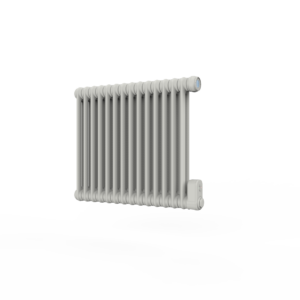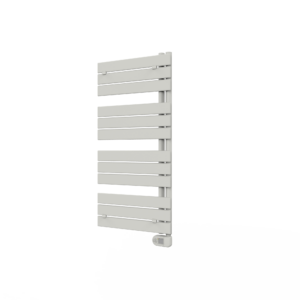Electric radiators are an excellent choice for providing efficient and effective heating in your home, becoming a popular option for those wanting to save on their household bills. If you’ve decided to invest in new electric radiators, whether it’s in one room or multiple locations throughout your home, you’ll want to ensure they are installed properly to ensure warmth and comfort during the chilly months.
In this comprehensive guide, we’ll show you the essential steps and tips for installing electric radiators in your home. From careful planning to energy-efficient usage, you’ll find everything you need here.
Planning Your Electric Radiator Installation
Before you can install, and ideally before purchase, you should carefully plan your requirements for the room. Installing electric radiators should not be a hasty decision. A well-planned installation ensures that you make the most of the benefits of electric radiators and reduce the chances of problems later on. Here are some reasons why careful planning is recommended:
- Efficiency – You can maximise the efficiency of your radiator, which translates into better heating and energy savings, by planning certain aspects such as the location in the room, room size and BTU requirement (more below).
- Safety – Planning ensures that you take safety precautions seriously. This is essential when working with electrical components.
- Aesthetic Appeal – A well-placed radiator can be both functional and visually appealing, so planning ahead allows you to choose a location that complements your room’s aesthetics.
Choosing the Right Location
Selecting the right location for wall mounted electric radiators is one of the most critical decisions you’ll make during the planning phase. Here’s how to go about it:
- Room Size – The size of the room where you intend to install electric radiators is important. A larger room may require a more powerful radiator or multiple radiators to provide even heating. On the other hand, a smaller room may only need a single radiator.
- Insulation – The level of insulation in your room will greatly impact the efficiency of your electric radiator. Well-insulated rooms will retain the heat much better, allowing the radiator to work more effectively. Check for proper insulation in walls, ceilings, and floors.
Tips for Measuring & Selecting the Best Electric Radiators For The Space
Selecting the right electric radiator size and type is crucial for optimal heating. Follow these tips to make the right choice:
- Measure the Room – Accurate measurements of the room’s dimensions will help you choose the appropriate radiator size. Measure the length, width, and height of the room.
- Calculate Heat Output – Determine the required heat output (in Watts or BTUs) based on the room size, insulation, and your desired temperature. To help make this simple, you can use a BTU heat loss calculator to work this out for you.
- Radiator Type – There are various types of electric radiators to choose from, including electric oil-filled radiators, designer electric radiators, and electric towel radiators. Consider your preferences and needs when choosing a type. Electric panel radiators are a popular choice due to their sleek design and efficient heating, but you may prefer the classic look of electric column radiators instead.
By carefully planning your installation, choosing the right location, and selecting the appropriate radiator size and type, you should be able to successfully install your electric radiators without issue, ensuring warmth and comfort in your home. Remember, if you are unsure, it’s best to check with a professional who can provide further guidance on installation tips and best practices.
Gathering Tools and Materials For Installation
For a job done well, you’ll need the right tools and materials. Here, we’ll provide you with a comprehensive list of what you’ll need and the importance of having these items before installation.
Here’s a list of items that can help provide a smooth installation process:
- Wall Anchors or Brackets – Necessary for securely mounting the radiator on the wall.
- Drill and Appropriate Drill Bits – To create holes for the wall anchors or brackets.
- Screwdriver – For attaching screws and making connections.
- Spirit Level – To ensure the radiator is perfectly level when mounting.
- Measuring Tape – For precise measurements of the installation area.
- Pencil – Used for marking positions on the wall.
- Screws and Plugs – Used for securing the radiator and other components.
- Personal Protective Equipment (PPE) – Safety gear such as safety glasses and gloves.
Importance of Having the Right Tools
Having the correct tools and materials is important for several reasons:
- Efficiency – The right tools make the electric radiator installation process more efficient, saving you time and effort.
- Safety – Proper tools and safety equipment are essential for your well-being during the installation, helping to prevent accidents and injuries.
- Quality Installation – Using the right tools ensures a high-quality and secure installation, reducing the risk of future problems.
- Longevity – A well-installed electric radiator will have a longer lifespan, providing reliable heating for years to come.
Electrical Wiring and Safety
When it comes to installing an electric radiator, a sound understanding of electrical requirements and a strong commitment to safety are crucial – that’s why it’s best to leave any electrical components to the professionals.
Whilst it may be tempting to do this yourself, you should arrange for an electrician to hard-wire your new electric radiators in line with the installation instructions that will come with your Stelrad purchase. Whilst you can get some electric radiators that can just be plugged in and used, any that need permanent installation to your wall should be done by a qualified professional.
How To Install Electric Radiators To A Wall
Properly mounting the electric radiator on the wall requires it to be securely attached. Using wall anchors or brackets makes this simple, which will come complete with your purchase when buying here at Stelrad. Mounting an electric radiator on the wall can be a straightforward process if you follow these steps:
- Choose the Right Location – Ensure you’ve selected the ideal location, as discussed earlier. Mark the exact position on the wall where you want to install the radiator. It should not be installed immediately below or in front of any power sockets or a junction box or in contact with the wall or floor. You should also avoid placing near curtains or flammable materials, and make sure there are no pipes or electrical wires in the wall which could be damaged while mounting. If in a bathroom, it needs to be a safe distance away from the bath (see diagram in installation instructions).
- Use a Spirit Level – Before drilling any holes, place a spirit level on the wall to confirm that the radiator will be perfectly horizontal. Adjust the markings if necessary.
- Mark Hole Positions – Mark the positions where you’ll need to drill holes for the wall anchors or brackets. These positions should align with the radiator’s mounting brackets.
- Drill Holes – Using an appropriate drill bit, carefully drill holes into the wall at the marked positions. Be mindful of the depth and size of the holes, which should match the wall anchors or brackets you’re using.
- Insert Wall Anchors or Brackets – Place the chosen wall anchors or brackets into the holes. Ensure they fit snugly and are flush with the wall surface.
- Secure the Radiator – Carefully lift the electric radiator and place it onto the wall anchors or brackets. Make sure it is level and securely fastened. Depending on the radiator model, it may have slots or hooks that allow it to hang on the brackets. Double-check the included instructions for your chosen electric radiator.
- Tighten Fasteners – Use appropriate screws or fasteners to secure the radiator to the wall brackets or anchors. Ensure that the radiator is firmly in place and does not wobble.
Importance of Using Wall Anchors or Brackets
Wall anchors or brackets are essential for supporting the weight of the electric radiator. Here’s why they are crucial:
- Stability – Wall anchors or brackets provide stability and prevent the radiator from falling or tilting. This is particularly important for larger electric radiators.
- Safety – Securely anchored radiators reduce the risk of accidents and injuries. Loose radiators can be hazardous, especially in households with children.
- Even Heat Distribution – Properly mounted radiators ensure that they heat the room evenly and efficiently. A stable radiator stays in the optimal position.
Guidance on Drilling Holes and Securing the Radiator
- Drill Carefully – When drilling holes, be cautious to avoid damaging electrical wiring or plumbing behind the wall. Use a cable and pipe detector if you’re unsure of what’s behind the wall.
- Wall Material – The type of wall you have (e.g., plaster, drywall, concrete) will determine the kind of anchors or brackets you need. Use the appropriate hardware for your specific wall material.
- Weight Capacity – Ensure that the wall anchors or brackets you select can support the weight of your electric radiator. When buying from Stelrad, you will receive the correct brackets to use.
- Consult Installation Guidelines – Always refer to the included installation guidelines for your specific electric radiator model. They may have specific recommendations for mounting.
By following these steps and taking the necessary precautions, you can successfully mount your electric radiator on the wall. A securely mounted radiator not only ensures effective heating but also enhances safety in your home.
Electric Radiators – Your Efficient Home Heating Solution
So there you have it, some helpful tips on how to install electric radiators so that you can make the most of these efficient home heating solutions. Although they are simple to mount on the wall just like standard central heating radiators, remember, you don’t have to do this yourself. As you will need a qualified electrician to help hardwire your electric radiator, you may want to arrange for a professional to help. Full installation instructions will be provided on delivery specific to your model.
If you have any questions, please contact the team here at Stelrad. If you need any spare parts or electric radiator fixing kits, please check out our accessories page.







